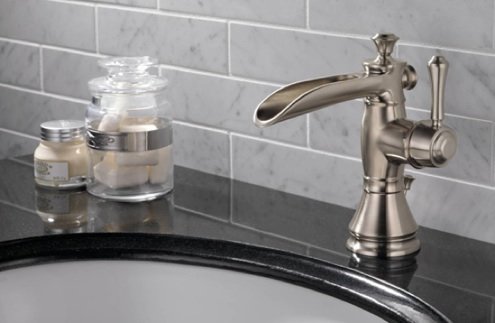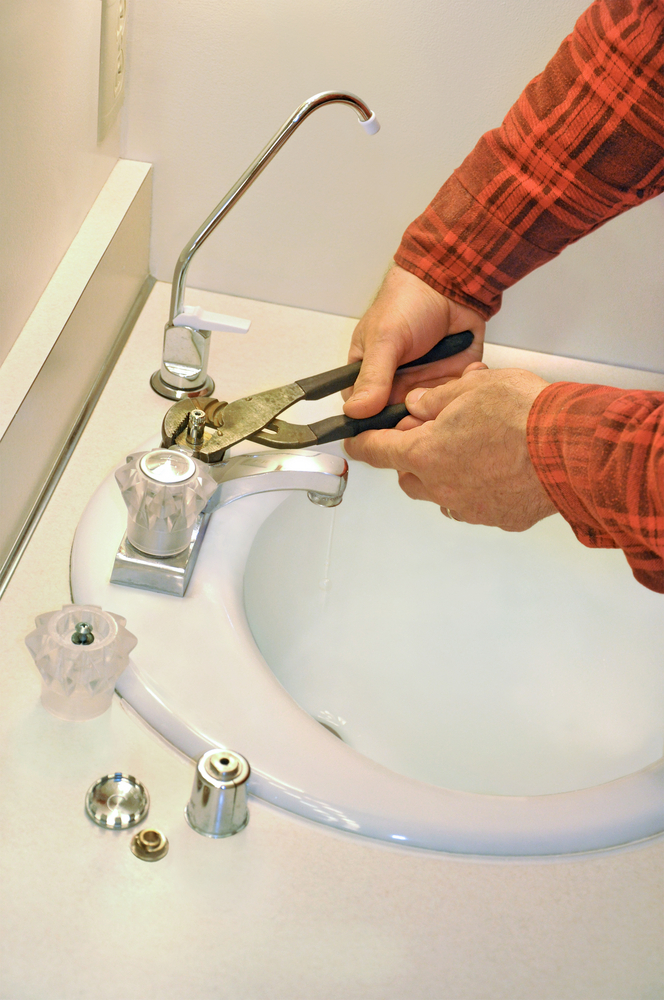Causes Why It's Vital to Repair a Faulty Faucet
Causes Why It's Vital to Repair a Faulty Faucet
Blog Article
We've stumbled upon this great article on Should I Repair or Replace a Leaky Faucet? below on the net and thought it made good sense to write about it with you here.

Trickling taps could seem like a minor hassle, but their effect goes beyond just the nuisance of the noise. From wasting water to incurring unnecessary financial expenses and wellness dangers, neglecting a leaking faucet can cause various consequences. In this short article, we'll delve into why it's critical to address this usual family concern immediately and properly.
Wastefulness of Water
Environmental Effect
Dripping faucets contribute substantially to water wastefulness. According to the Environmental Protection Agency (EPA), a single tap trickling at one drip per second can lose greater than 3,000 gallons of water per year. This not only pressures water resources however likewise influences communities and wild animals based on them.
Financial Prices
Raised Water Bills
Beyond the environmental impact, dripping faucets can pump up water expenses significantly. The collected waste gradually equates into higher utility expenditures, which can have been prevented with timely fixings.
Possible Residential Property Damages
Additionally, long term leaking can result in damage to components and surface areas bordering the faucet. Water accumulation can create discoloration, deterioration, and also architectural issues if left ignored, causing additional repair expenses.
Health Worries
Mold And Mildew and Mold Growth
The consistent presence of wetness from a trickling faucet produces a perfect atmosphere for mold and mildew and mildew growth. These fungis not just jeopardize interior air top quality but also present wellness risks, specifically for individuals with respiratory system conditions or allergies.
Waterborne Illness
Stationary water in trickling faucets can end up being a breeding place for microorganisms and various other virus, increasing the risk of waterborne diseases. Pollutants such as Legionella germs prosper in stationary water, possibly causing significant ailments when consumed or breathed in.
Do it yourself vs. Professional Repair
Advantages and disadvantages of DIY Repair
While some might try to take care of a leaking tap themselves, DIY repair services include their own set of obstacles. Without appropriate understanding and tools, do it yourself attempts can aggravate the issue or bring about incomplete repair services, lengthening the problem.
Benefits of Employing a Professional Plumber
Employing an expert plumber makes certain that the underlying reason for the leaking faucet is attended to successfully. Plumbers possess the competence and devices to detect and fix tap problems efficiently, conserving time and lessening the danger of additional damage.
Step-by-Step Overview to Dealing With a Dripping Tap
Tools Required
Before attempting to deal with a trickling faucet, collect the needed tools, consisting of a flexible wrench, screwdrivers, replacement components (such as washers or cartridges), and plumber's tape.
Usual Faucet Issues and Their Solutions
Determine the sort of faucet and the details problem creating the drip. Common troubles include damaged washing machines, corroded shutoff seats, or faulty O-rings. Refer to supplier directions or on-line tutorials for step-by-step support on fixings.
Preventive Measures
Routine Upkeep Tips
To stop dripping faucets, execute routine maintenance such as cleaning up aerators, inspecting for leakages, and changing worn-out parts immediately. Additionally, consider setting up water-saving devices or updating to extra effective components.
Importance of Prompt Repairs
Attending to trickling taps as quickly as they're observed stops further water waste and prospective damages, inevitably saving both water and money over time.
Influence On Home Value
Understanding of Well-Maintained Home
Maintaining a residential property in good condition, consisting of attending to maintenance issues like dripping faucets, boosts its regarded value and desirability amongst prospective buyers or tenants.
Impact on Resale Value
Characteristics with well-maintained plumbing components, including taps, command higher resale values in the property market. Dealing with trickling faucets can add to a positive perception during residential property assessments and negotiations.
Ecological Responsibility
Private Payment to Preservation
Taking duty for repairing leaking taps straightens with broader efforts toward water preservation and ecological sustainability. Every person's activities collectively make a significant impact on preserving valuable resources.
Sustainable Living Practices
By focusing on timely repair work and adopting water-saving habits, individuals contribute to lasting living methods that benefit both existing and future generations.
Final thought
Dealing with a leaking tap exceeds mere ease; it's a necessary step towards conserving water, lowering financial prices, and safeguarding wellness and home. Whether through do it yourself repairs or specialist support, acting to fix leaking taps is a tiny yet impactful way to promote accountable stewardship of sources and add to a healthier, much more sustainable future.
Most Common Reasons for a Leaky Faucet and How to Stop the Drip
Whether it’s your kitchen faucet leaking or a bathroom faucet leaking, one leaky faucet can waste anywhere from three to 30 gallons of water every single day. If the constant drip-drip-drip doesn’t get your attention, your water bill will. The good news is that, by following a few simple steps, chances are pretty good you can fix the problem yourself.
Why is it dripping?
Before you start taking things apart, let’s break down some of the most common causes of a leaky faucet.
Bad O-ring.
A cartridge is a valve that controls the flow of water into the faucet spout. On cartridge faucets there’s an O-ring—the little disc attached to the stem screw that holds the faucet handle in place. If it’s loose or worn-out, it can cause your sink handle to leak. Of course, the cartridge itself could be worn out. If that’s the case, make sure you replace it with the exact same kind.
Corroded valve seat.
The valve seat connects the faucet and the spout. If the leak seems to be coming from the spout, it might be because a buildup of water sediment has corroded the valve seat.
Worn-out washers or seals.
A leaky spout could be caused by a bad washer that rests against the valve seat. It’s just a matter of time before friction takes its toll. It could also be the wrong size washer or one that’s been installed incorrectly. Water sediments can also corrode inlet and outlet seals.
Water pressure.
If the faucet only drips now and then, or when you turn the handles a certain way, you should probably check your home’s water pressure.
Loose or broken parts.
The adjusting ring and packing nuts in the stream screw can become loose over time, causing your sink handle to leak. Try tightening or replacing the packing nut. If the leak is coming from the pipes underneath the sink, you probably have a broken pipe or fitting. If that’s the case, you should definitely call a plumber.
Know your faucet.
Faucets come in a variety of types. Each one has its own assembly—and its own possible causes of leaks. Learning about the four most common kinds of faucets will help you know how to take them apart and make any repairs.
How to stop a leaky faucet
Fixing that leaky faucet doesn’t have to take a lot of time, money, or expertise. It’s usually a simple matter of replacing a worn-out washer or gasket, a loose O ring, or another part. Chances are really good you can do this yourself if you follow these simple steps.
Shut off the water.
Before you tackle the faucet, cut off the water supply to the sink. There should be one valve for hot and one for cold. Hand-turn them clockwise with your hands till they close. If there are no valves under the sink, head to the basement and shut off the main water supply to the house. Then turn on the faucet until it empties out the water that’s still in the line and you’re ready to start. It’s a good idea to cover the sink drain with a plug or a rag so you don’t lose any small pieces and parts while you’re working.

I am just very involved in 4 Common Reasons for a Leaky Faucet and I hope you enjoyed the new article. If you liked our article plz consider to pass it around. I take joy in your readership.
Report this page